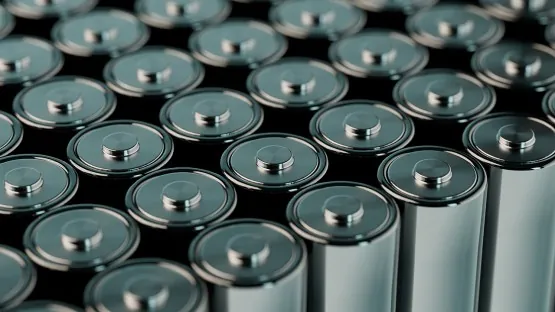
Revolutionizing Energy Storage: New Fused Molecules Set the Stage for Safer Lithium-Ion Batteries
2024-10-03
Author: Arjun
Groundbreaking Discovery
In a groundbreaking discovery that could transform the future of energy storage, researchers at Cornell University have developed a novel porous crystal structure by fusing two complex molecular shapes. This innovative design has the potential to dramatically enhance the safety and efficiency of solid-state lithium-ion batteries.
Published Findings
The findings, detailed in the article “Supramolecular Assembly of Fused Macrocycle-Cage Molecules for Fast Lithium-Ion Transport” published on September 9 in the Journal of the American Chemical Society, outline how this new approach addresses a critical issue in current battery technology.
Research Goals
Lead author Yuzhe Wang, an undergraduate researcher, along with assistant professor Yu Zhong, embarked on this project with a clear goal: to create a safer alternative to conventional lithium-ion batteries, which utilize liquid electrolytes that can lead to hazardous dendrite formation. These dendrites pose a significant risk by potentially causing batteries to short circuit or even explode in severe cases.
Challenges in Solid-State Batteries
The researchers tackled the challenge of solid-state batteries, which while typically safer than their liquid counterparts, suffer from slower ion movement due to increased resistance within solid materials. To solve this, Zhong aimed for a porous crystal structure that allows for smoother pathways for lithium ions to navigate through.
Synthesis of New Material
The duo synthesized a new material by combining macrocycles—ring-like molecules composed of twelve or more atoms—with multi-ringed molecular cages. This fusion not only created a structure with ample pore space for ion storage but also established interconnected channels that facilitate efficient ion transport.
Enhanced Ionic Conductivity
The resulting nanoporous crystal exhibited an astonishing ionic conductivity of up to 8.3 × 10^-4 siemens per centimeter, marking a record high for molecule-based solid-state electrolytes. This improvement showcases how tailored molecular designs can pave the way for a new generation of batteries that prioritize safety without compromising performance.
Collaborative Approach
To validate their structure and understand its properties better, the team collaborated with experts in materials science. Judy Cha utilized advanced scanning transmission electron microscopy, while Jingjie Yeo focused on computer simulations, offering insights into how lithium ions interact at the molecular level.
Potential Applications
Beyond potential applications in safer batteries, this innovative material may also have broader uses, including in water purification systems, bioelectronic circuits, and advanced sensors, expanding its impact across multiple fields.
Future Research Directions
We're merely scratching the surface of what's possible," Zhong emphasized. "The unique combination of macrocycle and molecular cage geometries is a relatively unexplored area. As we continue to synthesize different molecular structures, the potential to create new, diverse nanoporous materials for various applications, including lithium-ion conductivity and perhaps much more, presents an exciting frontier for research.
Academic Collaboration
Co-authors of the study include doctoral and master’s students, postdoctoral researchers, and collaborators from notable institutions such as Rice University and the University of Chicago, reinforcing the project's significant academic support.
Conclusion
This cutting-edge research not only promises to enhance battery safety but may also lead the way toward innovative solutions in energy and environmental science. As the demand for safe and efficient energy storage solutions continues to grow, such discoveries will become increasingly vital.
Stay Tuned
Stay tuned as this research unfolds — the future of energy might just be in these fused molecules!



 Brasil (PT)
Brasil (PT)
 Canada (EN)
Canada (EN)
 Chile (ES)
Chile (ES)
 España (ES)
España (ES)
 France (FR)
France (FR)
 Hong Kong (EN)
Hong Kong (EN)
 Italia (IT)
Italia (IT)
 日本 (JA)
日本 (JA)
 Magyarország (HU)
Magyarország (HU)
 Norge (NO)
Norge (NO)
 Polska (PL)
Polska (PL)
 Schweiz (DE)
Schweiz (DE)
 Singapore (EN)
Singapore (EN)
 Sverige (SV)
Sverige (SV)
 Suomi (FI)
Suomi (FI)
 Türkiye (TR)
Türkiye (TR)